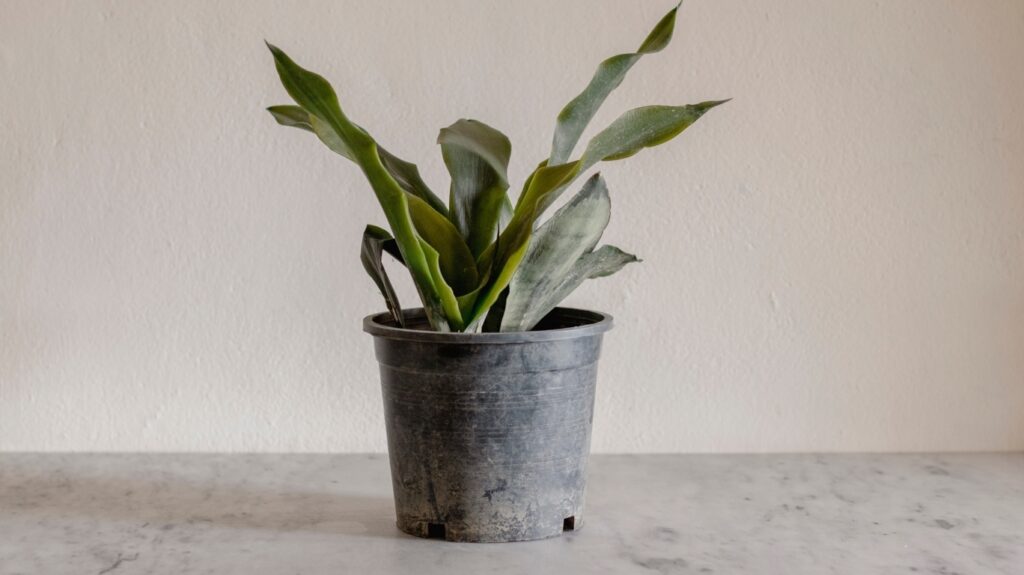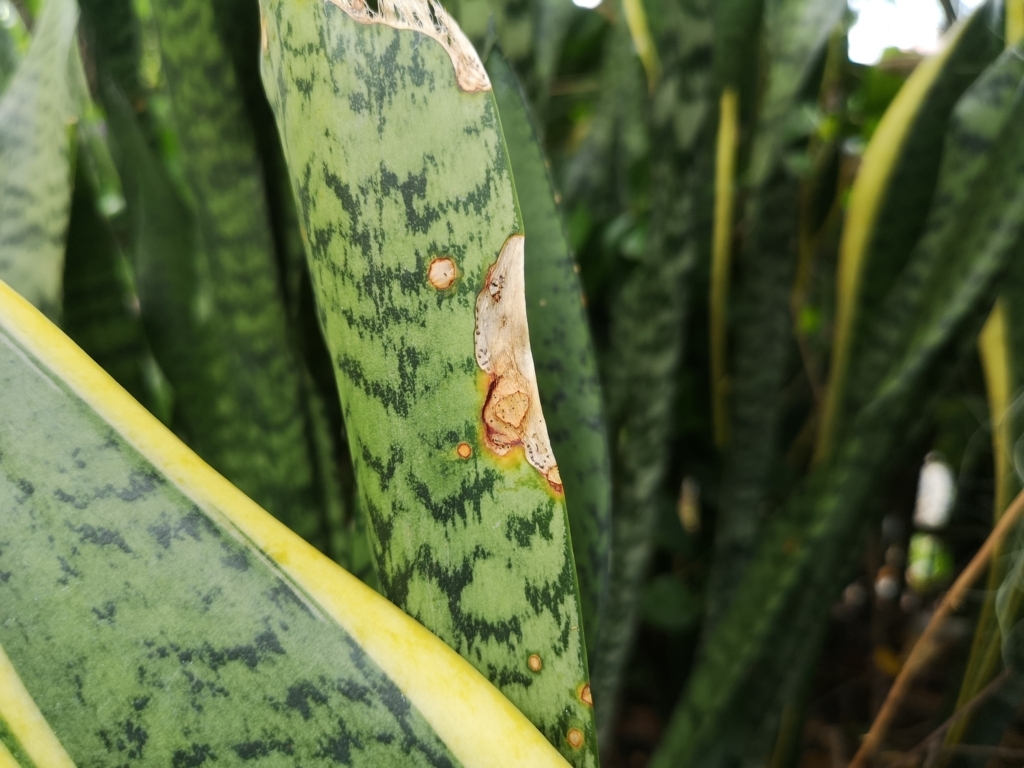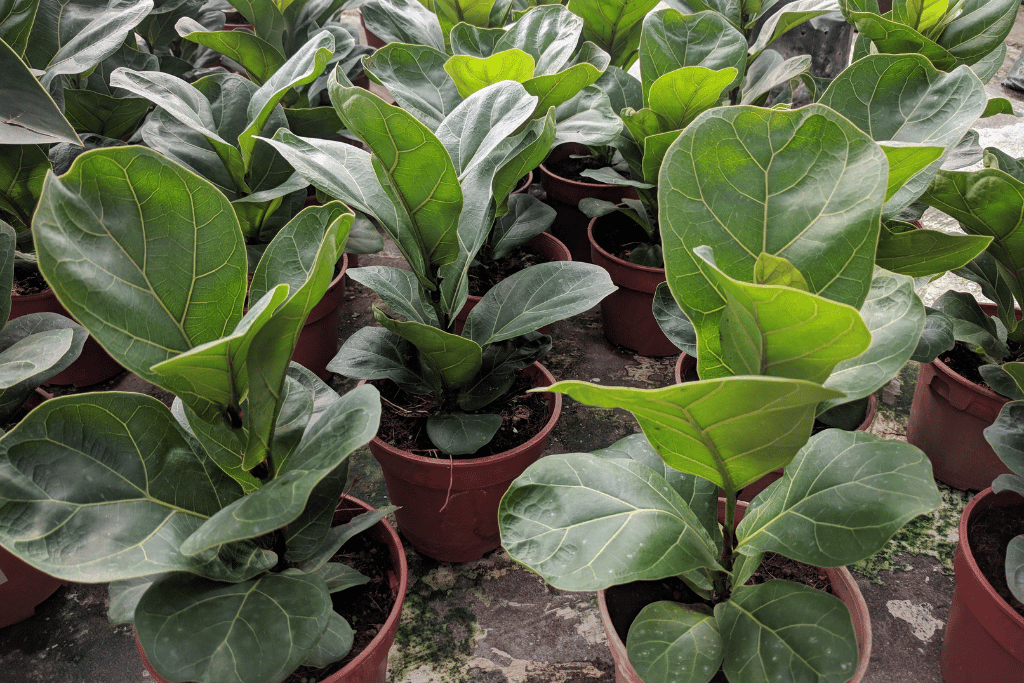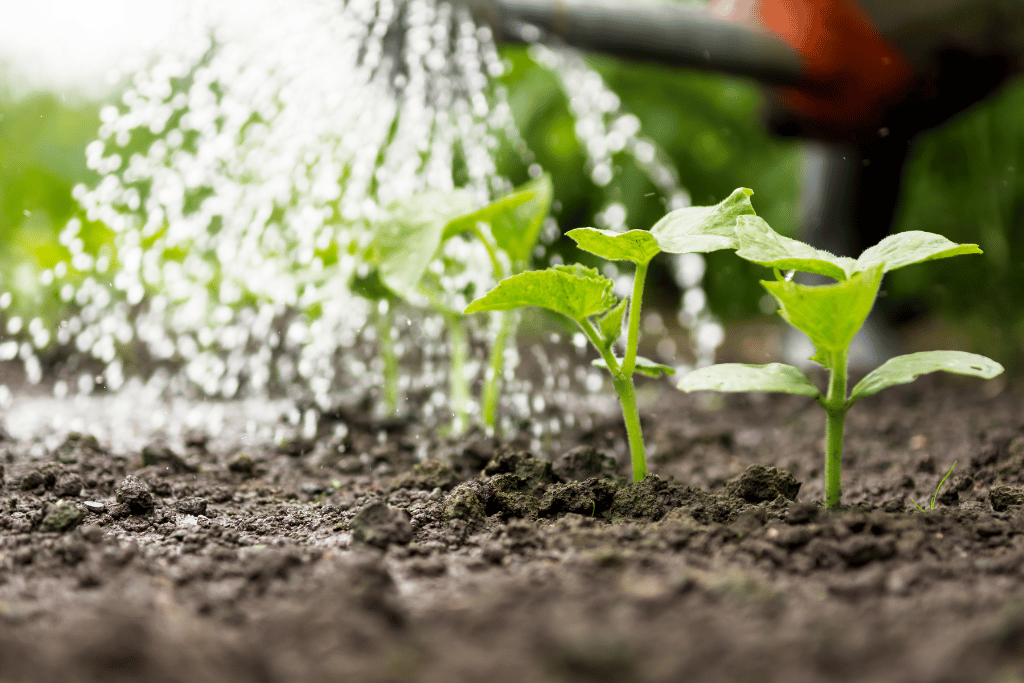
Do you know why snake plants are so popular? Is it the fancy leaves? Or the air purifying properties. Or is it their easy maintenance? Be it any of these, owning these lush, beautiful snake plants in your home is a pure visual delight. Unfortunately, they have their share of troubles. Thus it intrigues us to explore snake plant disadvantages and how we can overcome them.
So, if you are a snake plant parent or planning to be one, this article will let you know about any bumps in the road ahead. Worry not. I am also here to guide you in overcoming these snake plant problems with simple and effective solutions.
Without any delay, let’s begin!
What are Snake Plants?
Snake plant or Sansevieria trifasciata is a popular houseplant. These plants are native to west Africa and thrive in warm conditions. Plant enthusiasts often grow snake plants in their homes for their leafy beauty and air-purifying benefits.
Snake plants are easy to grow and are almost impossible to kill. The plant’s leaves resemble swords with their slender body and pointed tips. These are succulents, which means the leaves of the plant to store water in their fleshy blades.
Snake plants are sensitive to temperature, lighting, and watering. Thus any change in their climate can harm the plants and effect their growth. This sensitivity makes them difficult to manage in non-favorable conditions.
Snake Plant Disadvantages
Tending plants is all about understanding their requirements and providing adequate conditions. As a plant parent, I suggest looking over these weaknesses of snake plants as opportunities to improve their longevity as you conquer them!.
Let’s identify the disadvantages of snake plants and convert them into positivity. Here is a guide to snake plant disadvantages and how to fix them. There are 9 of them– one problem at a time.
Slow Growth Rate
Are you growing snake plants as houseplants? If yes, then slow growth can be your primary complaint!
Snake plants can grow from two to 12 inches in a year. But, this varies depending on factors like sunlight, watering, soil health, and placement.
In general, indoor snake plants grow slower than outdoor grown ones. Some of the reasons for slow growth are as follows.
Poor lighting: Light is vital for plants to survive. Limited access to bright indirect sunlight can reduce cell multiplication and plant growth. Keeping them in low-lit spaces can lower water absorption and lead to soggy soil.
Space constraints: Another reason for slow growth is any space constraints for their root spread. Indoor snake plants are often grown in pots. These pots restrict root growth, reducing the number of new leaf formations in snake plants.
Yet, slow growth can benefit plant parents who have their own space constraints or prefer low maintenance plants, slow growth saves time on pruning and repotting.
How to fix slow growth in snake plants?
The simplest way to fix slow growth in snake plants is by giving them more sunlight. Shift your plant pots to a brightly lit space. Sunlight speeds up development and improves your plant health. Proper plant care, like watering, feeding, and pest prevention, can also help to boost plant growth.
Sensitivity to Cold Temperatures

Snake plants hate cold temperatures. Anything below 50 degrees Fahrenheit will kill them.
As tropical plants, snake plants thrive in warm conditions and they are very sensitive to cold. Freezing temperatures are harmful, and they won’t survive an outdoor frost in the winter.
Thankfully snake plants flourish in the average room temperature range between 60 to 75 degrees Fahrenheit– (16 to 24 degrees Celsius). Even though slight fluctuations won’t harm the plant, prolonged exposure to extreme climates can be disastrous.
Extreme heat can burn the leaves, making them brown and wilted. But extreme cold is even worse.
How to protect snake plants from cold temperatures?
Make sure you move your snake plants indoors during winter or opt for small greenhouse setups when you grow them outdoors. While raising them indoors during the cold seasons, avoid placing them near open windows or air vents to prevent exposure to cold drafts.
Toxicity
Another problem joining our snake plant disadvantages list is toxicity!
We call snake plants snake plants for a reason! The slender foliage of these plants resembles the snake, thus gaining it this name. Yet, their toxicity is another reason to relate snake plants with snakes.
Consuming snake plants is toxic to humans and pets. Leaves, flowers, rhizomes, and all parts of the snake plant contain poison. They have a chemical called saponin which causes gastrointestinal problems when consumed.
How to fix toxicity in snake plants?
The best solution to handle toxicity in snake plants is to keep them out of reach of pets and humans. They are toxic only if consumed. So if you have pets or kids who like nibbling, keep these plants away from them.
Overwatering Problems

Snake plants are famous for being low-maintenance and drought-resistant. The quickest way to kill this hard-to-kill plant is by overwatering.
People often overwater their snake plants to speed up their growth. But, unfortunately, things mess up. Overwatering can make the soil soggy, encourage root rot, and kill the plants.
Overwatering problems are hard to fix as snake plants’ water demands rely on various conditions. Factors like sunlight, soil health, humidity, and temperature influence water requirements. The difficulty in pinpointing exact water requirements makes overwatering a common problem.
How do you fix overwatered snake plants?
If the soil becomes soggy, move the plant to direct sunlight until the excess water evaporates. Under sunlight, the plant’s water absorption also increases, thereby removing the excess water. But take them back to indirect sunlight once the water evaporates. Prolonged exposure to direct sunlight will burn the leaves.
If the soil is very waterlogged, you can remove the plant from the wet earth and opt for a new potting mix.
Propagation Problems

There are different ways to propagate a snake plant. Some standard techniques are propagation by rhizome division or leaf-cutting. The common problems with propagation is if the divisions or cuttings fail to develop roots and stem rotting. And the main reason behind both these problems can be overwatering.
How do you fix propagation problems in snake plants?
Since overwatering is the primary problem behind the rotting of roots and stems, controlling it can encourage successful propagation. You should use a potting mix with good drainage and water the cuttings just enough to prevent them from drying. But also not so much that excess water accumulates in the pot.
Irregular Flowering
Isn’t it exhausting to wait years to find out if your snake plant is flowering?
Wait, can snake plants flower?
In most cases, you might not have seen snake plant flowers. But, yes, snake plants can flower. However, their slow growth rate keeps them from reaching that stage.
Slow growth in snake plants corresponds to irregular flowering. Certain species of snake plants, like Sansevieria cylindrica, flower in the early growing seasons, while other varieties bloom very rarely. Lack of growth can diminish the chances of your snake plant flowering.
How to fix irregular flowering in snake plants?
You cannot control flowering in snake plants. But, the possibility of witnessing blooms of snake plants in your indoor garden is higher when you speed up their growth rate.
Some even believe putting your snake plant in stress can induce flowering. Underwatering your snake plants can cause stress and result in flowering provided the plant receives optimum sunlight. However, it’s your call if you are ready to risk your plants’ potential growth for flowering.
Leaf Troubles

Snake plants are famous for their leaves. They are long, slender, and green in color, but unfortunately, these green beauties have problems. Having troubles in your leaves spoil the entire essence of your snake plant, but it also signals it as an unhealthy snake plant. High time you treat and care for them. Unfavorable conditions can cause these to droop, bend or fall from their upright state.
Some typical leaf troubles are as follows:
Leaves falling over, bending, or drooping
As the snake plant leaves accumulate water, they don’t need extra water. So when you overwater them, roots deteriorate, resulting in the leaves drooping, bending, and falling over.
Leaves turning yellow
The vibrant leaves of the snake plants become yellow and wilted. This is usually due to exposure to sunlight and watering mistakes. The plants fail to perform their daily functions, turning yellow and wilted.
Leaves splitting
Leaves split due to two main reasons. One is physical damage. While the other is low humidity levels. Aim for a suitable humidity between 40 – 50%. Dry conditions can cause the foliage to crack and split. Rectify these splits by using a humidifier, but never mist them.
Outstretched leaves
The presence of long, outstretched leaves represents the absence of sunlight. The beauty of the snake plant lies in its long, slender, upright leaves. These leaves become stretchy and droop without light, so the plants tend to grow in the direction of sunlight. So, in the absence of light, plants leaves take the path that provides more light. Thus it makes them look outstretched.
How to fix leaf troubles in snake plants?
Leaf problems are usually signs of too much or too little watering. Your plant’s roots cannot absorb the required amount of water. It’s either because they have become mushy due to overwatering or they are dry due to under-watering.
You can fix this by providing adequate water to match the plants’ demand. Also, check for the intensity and duration of sunlight. Too little lighting can fade away the plants colors, while too much sunlight can burn them into brown or yellow. If things go downhill, try repotting your plant into a new pot as a final rescue.
Pest & Fungal Attacks

Another snake plant disadvantage is fungal attacks. Despite snake plants being famous for their pest-resistance properties. Overwatering and lack of care can cause pest and fungal infections.
Southern blight is a snake plant fungus. This appears on either side of the leaves and spoils the visual appeal of the plants. Overwatering, misting, and lack of sunlight can cause fungal infections in snake plants.
How to fix fungus on snake plants?
Fungal infections are difficult to treat. The best way to prevent fungus on snake plants is by treating their leaves with fungicides. If the fungal spread is small, remove the damaged leaves. But if the problem is severe, remove the affected plant to prevent it from affecting other houseplants.
As for the pests, you can try using pesticides or neem oil.
Feng Shui Beliefs
Now that we have covered almost all the disadvantages of snake plants, I have kept this particular disadvantage as a final pointer: snake plants cause bad luck.
Before you roll your eyes over these beliefs, let me explain. I know most people won’t believe in luck, charms, and stars, but it’s inevitable to wind up with this drawback listicle of snake plants without mentioning its feng shui properties.
Some homeowners avoid snake plants for their potential to invite bad luck.
How to fix snake plant bad luck problems?
I am not an expert in superstitious beliefs like feng shui, but some claim that only particular placements of snake plants drive negative energy. Keeping them alone in a corner can cleanse negative energy and replace it with good vibes.
PS: If you do not believe in such concepts, please ignore them.
Do Snake Plant Disadvantages Make them Worth Growing?
In summary, snake plants are excellent houseplants that thrive with minimal care. However, their drawbacks, like slow growth, temperature sensitivity, toxicity, fungal attacks, and other maintenance troubles, can make it challenging to grow them. But wait, don’t let this weigh you down. These leafy beauties adorn your indoor garden like no other plants.Growing them indoors enhances your interior’s quality and appeal.
Every coin has two sides. And so do the snake plants. Snake plant disadvantages are manageable and minuscule compared to the vast benefits. I love them in my living room and don’t intend to remove them soon. How about you? Will you join the snake plant team? Comment below and let me know!
Frequently Asked Questions (FAQ)
Is a snake plant not suitable for the home?
Snake plants are great houseplants. They are visually appealing and purify indoor air quality. You can grow them both indoors and outdoors with very little maintenance.
Are snake plants toxic to the touch?
Yes, snake plants are toxic to humans and pets. However, the poison in these plants affects us only when we consume them. The toxins in them cause gastrointestinal problems. It doesn’t cause any issues when we physically touch them.
Can you sleep next to a snake plant?
Yes, you can sleep next to snake plants as they emit oxygen at night and help you sleep better. Growing a snake in your room can purify its air quality. As a natural air purifier, the snake plant can cleanse chemical components like trichloroethylene, benzene, xylene, toluene, and formaldehyde.
Do snake plants attract snakes?
As funny as it sounds, snake plants have no connection with snakes. Even though the leaves of snake plants look like snakes, they often behave like a repellent to snakes. Snakes don’t like these plants and stay away from them.
Do snake plants like to be crowded?
Yes, snake plants like to be crowded. They want to fit tight in the plant pots and imitate the natural environment of the soil. Even though they prefer being in a group, consider reporting them when they become root-bound, as this might reduce the water absorption capacity of the plant. Extremely root-bound plants begin to crack their pots, causing eventual health issues.



